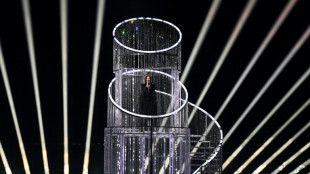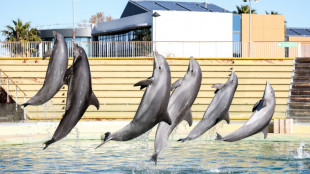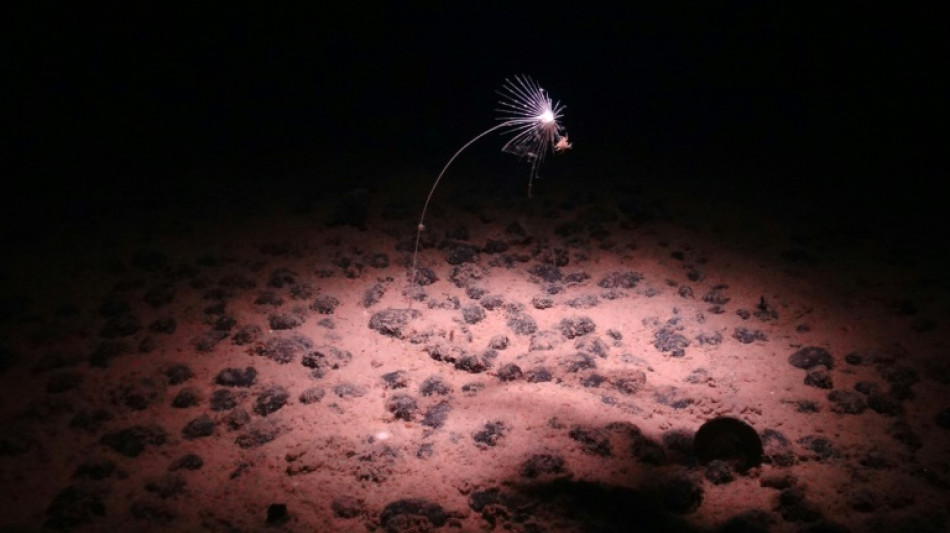
-
 Starvation fears as flood toll passes 900 in Indonesia
Starvation fears as flood toll passes 900 in Indonesia
-
Four civilians, soldier killed in Afghan-Pakistan border clash

-
 Milan-Cortina chief admits venue time pinch as Olympic torch relay begins
Milan-Cortina chief admits venue time pinch as Olympic torch relay begins
-
England make quick start after Australia take big lead at Gabba

-
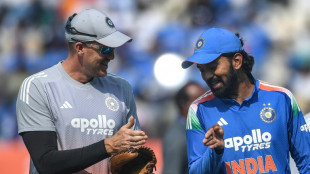 Finally! India break toss jinx as Rahul gets lucky
Finally! India break toss jinx as Rahul gets lucky
-
Will EU give ground on 2035 combustion-engine ban?

-
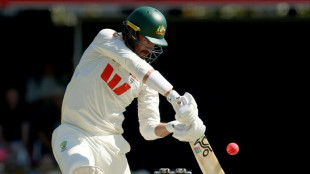 England nemesis Starc stretches Australia lead in Gabba Ashes Test
England nemesis Starc stretches Australia lead in Gabba Ashes Test
-
Banana skin 'double whammy' derails McIlroy at Australian Open

-
 Epic Greaves double ton earns West Indies draw in first NZ Test
Epic Greaves double ton earns West Indies draw in first NZ Test
-
Thunder roll to 14th straight NBA win, Celtics beat depleted Lakers

-
 Myanmar citizens head to early polls in Bangkok
Myanmar citizens head to early polls in Bangkok
-
Starvation fears as more heavy rain threaten flood-ruined Indonesia

-
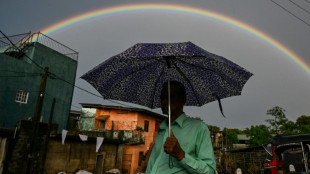 Sri Lanka unveils cyclone aid plan as rains persist
Sri Lanka unveils cyclone aid plan as rains persist
-
Avatar 3 aims to become end-of-year blockbuster

-
 Contenders plot path to 2026 World Cup glory after Trump steals show at draw
Contenders plot path to 2026 World Cup glory after Trump steals show at draw
-
Greaves leads dramatic West Indies run chase in NZ Test nail-biter

-
 World record-holders Walsh, Smith grab wins at US Open
World record-holders Walsh, Smith grab wins at US Open
-
Ukraine, US to meet for third day, agree 'real progress' depends on Russia

-
 Double wicket strike as New Zealand eye victory over West Indies
Double wicket strike as New Zealand eye victory over West Indies
-
Peace medal and YMCA: Trump steals the show at World Cup draw

-
 NBA legend Jordan in court as NASCAR anti-trust case begins
NBA legend Jordan in court as NASCAR anti-trust case begins
-
How coaches reacted to 2026 World Cup draw

-
 Glasgow down Sale as Stomers win at Bayonne in Champions Cup
Glasgow down Sale as Stomers win at Bayonne in Champions Cup
-
Trump takes aim at Europe in new security strategy

-
 Witness in South Africa justice-system crimes probe shot dead
Witness in South Africa justice-system crimes probe shot dead
-
Tuchel urges England not to get carried away plotting route to World Cup glory

-
 Russian ambassador slams EU frozen assets plan for Ukraine
Russian ambassador slams EU frozen assets plan for Ukraine
-
2026 World Cup draw is kind to favorites as Trump takes limelight

-
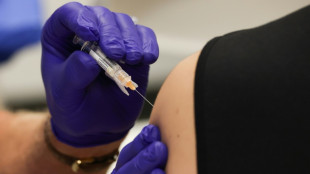 WHO chief upbeat on missing piece of pandemic treaty
WHO chief upbeat on missing piece of pandemic treaty
-
US vaccine panel upends hepatitis B advice in latest Trump-era shift

-
 Ancelotti says Brazil have 'difficult' World Cup group with Morocco
Ancelotti says Brazil have 'difficult' World Cup group with Morocco
-
Kriecmayr wins weather-disrupted Beaver Creek super-G

-
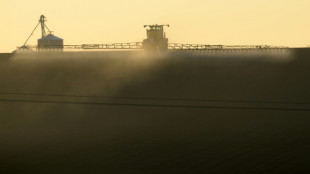 Ghostwriters, polo shirts, and the fall of a landmark pesticide study
Ghostwriters, polo shirts, and the fall of a landmark pesticide study
-
Mixed day for global stocks as market digest huge Netflix deal

-
 Fighting erupts in DR Congo a day after peace deal signed
Fighting erupts in DR Congo a day after peace deal signed
-
England boss Tuchel wary of 'surprise' in World Cup draw

-
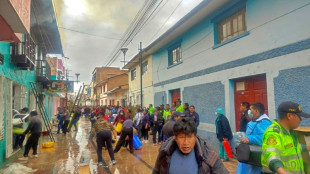 10 university students die in Peru restaurant fire
10 university students die in Peru restaurant fire
-
'Sinners' tops Critics Choice nominations

-
 Netflix's Warner Bros. acquisition sparks backlash
Netflix's Warner Bros. acquisition sparks backlash
-
France probes mystery drone flight over nuclear sub base
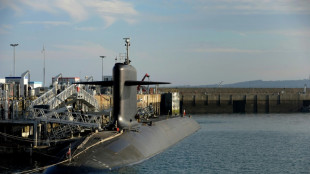
-
 Frank Gehry: five key works
Frank Gehry: five key works
-
US Supreme Court to weigh Trump bid to end birthright citizenship

-
 Frank Gehry, master architect with a flair for drama, dead at 96
Frank Gehry, master architect with a flair for drama, dead at 96
-
'It doesn't make sense': Trump wants to rename American football

-
 A day after peace accord signed, shelling forces DRC locals to flee
A day after peace accord signed, shelling forces DRC locals to flee
-
Draw for 2026 World Cup kind to favorites as Trump takes center stage

-
 Netflix to buy Warner Bros. in deal of the decade
Netflix to buy Warner Bros. in deal of the decade
-
US sanctions equate us with drug traffickers: ICC dep. prosecutor

-
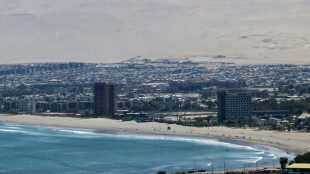 Migration and crime fears loom over Chile's presidential runoff
Migration and crime fears loom over Chile's presidential runoff
-
French officer charged after police fracture woman's skull

| RBGPF | 0% | 78.35 | $ | |
| CMSD | -0.3% | 23.25 | $ | |
| NGG | -0.66% | 75.41 | $ | |
| GSK | -0.33% | 48.41 | $ | |
| CMSC | -0.21% | 23.43 | $ | |
| RELX | -0.55% | 40.32 | $ | |
| SCS | -0.56% | 16.14 | $ | |
| BCC | -1.66% | 73.05 | $ | |
| RYCEF | -0.34% | 14.62 | $ | |
| AZN | 0.17% | 90.18 | $ | |
| RIO | -0.92% | 73.06 | $ | |
| JRI | 0.29% | 13.79 | $ | |
| BCE | 1.4% | 23.55 | $ | |
| VOD | -1.31% | 12.47 | $ | |
| BP | -3.91% | 35.83 | $ | |
| BTI | -1.81% | 57.01 | $ |

Race to name creatures of the deep as mining interest grows
In the cold, lightless Pacific Ocean deep, the seabed is scattered with metal-rich rocks coveted by miners -- and huge numbers of strange and rare animals almost entirely unknown to science.
Researchers are scrambling to name thousands of these newly discovered species.
The mining industry is pushing regulators to finalise rules that could open the way for extraction in parts of the vast Clarion-Clipperton Zone (CCZ), stretching between Hawaii and Mexico.
Once thought an underwater wasteland, the CCZ is now known to harbour an abundance of wildlife.
They range from tiny worms in the muddy sediment, to floating sponges tethered to the rocks like aquatic balloons and a giant sea cucumber dubbed the "gummy squirrel".
Campaigners say this biodiversity is the true treasure of Earth's largest and least understood environment.
They warn that mining could drive species into extinction before they have even been discovered.
Interest in mining the potato-sized "nodules", which contain metals used in technologies such as smartphone touchscreens and rechargeable batteries, has opened the way for researchers to explore the CCZ.
"We have a far greater understanding of that part of the world than we would have had if we weren't trying to exploit it," said Tammy Horton at Britain's National Oceanography Centre (NOC).
Scientists have scooped up sediment in box cores dropped from ships and deployed remote vehicles to take pictures and collect samples from the seafloor.
A snapshot of any given patch of CCZ seafloor might show just a solitary brittle star, but researchers seldom see the same creature twice.
There are "huge numbers of rare species", said Horton, adding that much of the diversity was among the creatures living in the mud.
The nodules are also a unique habitat, like coral gardens in miniature.
- 'First step' -
The first stocktake of data from scientific explorations in the CCZ, published in 2023, found that some 90 percent of 5,000 animal species recorded were new to science.
The International Seabed Authority (ISA) has set a target for over a thousand species to be described by 2030 in the regions targeted by miners.
The process is painstaking.
Where possible, each animal needs to be sketched, dissected and assigned a molecular "barcode" -- a sort of DNA fingerprint that allows other researchers to identify it.
It took Horton and a team of specialists a year to describe 27 of the hundred or more unnamed amphipods -- a type of small crustacean.
"The fundamental, basic, first step in any understanding of an environment is knowing what the animals are, how many of them there are and how wide their distribution is," she told AFP.
This would map out a baseline for life in the abyssal plain, so that potential harm can be better understood.
Conservation group Fauna & Flora has said risks range from damage to the ocean food web, to the potential for exacerbating climate change -- by churning up sediment that stores planet-heating carbon.
The ISA is due to finalise the international seabed mining code this year, but much work needs to be done.
- Cold War connections -
The oldest mining test site is a strip of CCZ seabed, ploughed in 1979.
Daniel Jones, a NOC researcher who trawled the archives to pinpoint the location, said the test followed an CIA plot to recover a Russian nuclear submarine, using deep-sea mining as a cover story.
The CIA leased a ship for real deep-sea mining, according to Jones.
He found an old photograph of the roughly eight-metre- (26-feet-) wide machine used to harvest nodules.
His team visited the test site in 2023, more than 40 years after the original disturbance.
Machine tracks were still clearly visible on the seafloor, he said.
There was "the first evidence of biological recovery" along the mined tracks, Jones told reporters recently, but the animals were not back up to their normal densities.
The slow pace of change in the CCZ is illustrated by the nodules themselves, likely millions of years in the making.
Each one probably started as a shard of hard surface -- a shark tooth or a fish ear bone -- that settled on the seabed.
They then grew slowly, by attracting minerals that naturally occur in the water at extremely low concentrations.
They contain metals like cobalt that are particularly in demand in the energy transition.
But the European Academies of Science Advisory Council (EASAC) has said the need for the nodules has been overstated and urged a mining moratorium.
EASAC Environment Director Michael Norton said that once started, deep sea exploitation would be hard to stop.
"It's a one-way street," he said. "Once you go down it, you won't turn around willingly."
O.Lorenz--BTB

